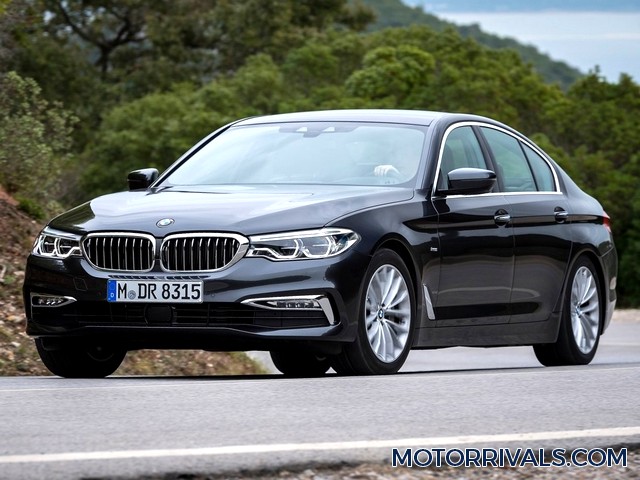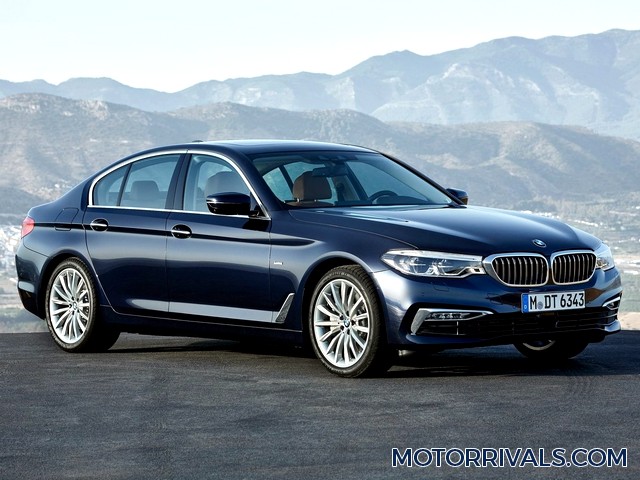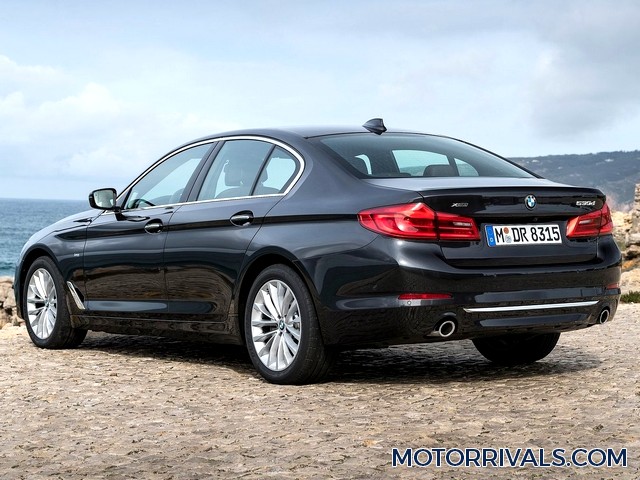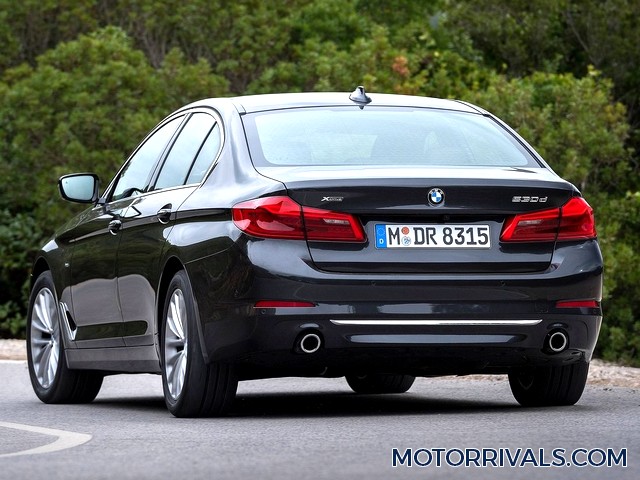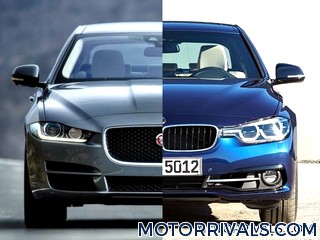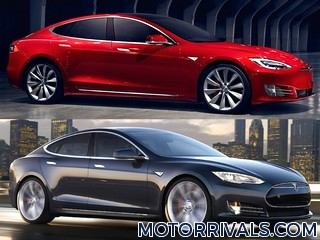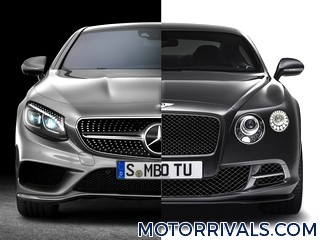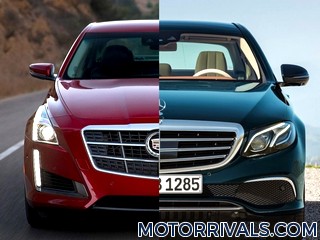2017 BMW 5 Series vs 2017 Tesla Model S
BMW Press Release Highlights
Powertrain
The petrol units employ TwinScroll turbocharging, High Precision Injection, Double-VANOS variable camshaft control and Valvetronic fully variable valve timing. The diesel models, meanwhile, feature a turbocharger with variable turbine geometry and latest-generation common-rail direct injection. The new two-litre four-cylinder in-line turbocharged direct injection engine in the BMW 530i delivers its peak output of 185 kW/252 hp (up 5 kW/7 hp on its predecessor). Average fuel consumption works out at 5.4 l/100 km (52.3 mpg imp). The BMW 530i sprints from 0 to 100 km/h (62 mph) in 6.2 seconds and reaches a top speed of 250 km/h (155 mph). The new BMW 540i and generates 250 kW/340 hp (+25 kW/34 hp). The three-litre straight-six musters up a mighty 450 Nm / 332 lb ft of torque (+50 Nm/37 lb-ft). Average consumption is a frugal 6.5 l/100 km (43.5 mpg imp). The sedan powers from 0 to 100 km/h (62 mph) in just 5.1 seconds and top speed is electronically limited to 250 km/h (155 mph). The all-wheel-drive BMW 540i xDrive sets a new class-beating time of 4.8 seconds for the sprint from 0 to 100 km/h (62 mph). Its fuel consumption is 6.7 l/100 km (42.2 mpg imp). A plug-in hybrid BMW 530e iPerformance generating overall output of 185 kW/252 hp and fuel consumption of 2.0 l/100 km (141.2 mpg imp) sets new standards. The BMW 530e iPerformance has an electric range of 45 kilometres (28 miles). The BMW M550i xDrive, whose V8 engine with an output of 340 kW/462 hp and maximum torque of 650 Nm (479 lb-ft) races from 0 to 100 km/h (62 mph) in 4.0 seconds with efficiency (fuel consumption combined: 8.9 l/100 km [31.7 mpg imp]. All the engines available at launch can link up with BMW xDrive intelligent all-wheel drive.Chassis
The new double-wishbone front axle's kinematics are perfectly configured for a long-distance sedan. Light-metal components are also used extensively in the new five-link rear suspension, which is even lighter and stiffer than in the previous model and provides precise wheel location and excellent tracking stability in all driving situations. The electromechanical steering system features a variable steering ratio and speed-sensitive power assistance. The new BMW 5-Series is fitted with either single-piece or two-piece four-piston fixed aluminium callipers at the front, with lightweight discs, and single-piston fixed callipers. The optional Adaptive Drive system, which combines Dynamic Damper Control with Dynamic Drive active roll stabilisation, provides unsurpassed dynamics and comfort.Technology
The new BMW 5-Series Sedan boasts an innovative technology first premiered in 2015 in the new BMW 7-Series: Remote Control Parking. This feature enables drivers to use parking spaces that are narrow enough to make getting out of the car very awkward. All acceleration and braking actions are monitored and controlled by the Park Distance Control (PDC), the Parking Assistant and the Surround View sensors, while the engine can be started and switched off by remote control. Surround View and Remote 3D View shows a bird's-eye view of the driver's car as well as a three-dimensional image of the traffic situation. With the Remote 3D View technology, these three-dimensional views of the vehicle's surrounding area can also be beamed to the owner's smartphone with the help of BMW Connected. The optional Display Key offers a host of other functions as well. The smart key includes a colour display with touch control, which provides information on the most important vehicle parameters. The options list also includes a WiFi hotspot offering a high-speed internet connection (LTE) for up to ten mobile devices. Apple CarPlay is available in the BMW 5-Series Sedan too. The latest generation of the Navigation system Professional boasts quicker start-up, even faster route calculation and more realistic 3D graphics in cities.Safety
The new BMW 5-Series features a large number of automated functions for a vehicle in this segment. Dynamic Cruise Control (DCC) is standard on the BMW 5-Series Sedan. The optional Active Cruise Control (ACC) uses radar to adjust the pre-selected speed to the traffic situation. If vehicles which are part of the inter-connected BMW fleet detect a hazard, information is immediately relayed to the BMW backend. The optional Driving Assist Plus safety package for the new BMW 5-Series Sedan comes with a host of new functions. These include the Lane Keeping Assistant, Lane Departure Warning, Lane Change Warning, and Side Collision Warning. Another new function contained in the Driving Assist Plus package is the evasion aid. Safety is enhanced by the standard-fitted Dynamic Stability Control (DSC). Another system that provides an early foretaste of automated driving is the Steering and lane control assistant. Drivers can now take their hands off the wheel much more often than in the past. The pre-crash accident detection system Active Protection further enhances passive safety in the new BMW 5-Series by detecting potential accident situations as they arise.Tesla Press Release Highlights
Without an internal combustion engine, Tesla Model S allows for additional cargo space and offers a spacious cabin fitting five adults and two children (rear-facing jump seats).
Powertrain
Reaching 0-60 mph in a mere 2.8 seconds, Model S is the quickest four-door sedan ever built.Model S allows you to travel anywhere without using a drop of gasoline. The EPA rates the efficiency of Tesla Model S as equivalent to 90 mpg.
With two motors, one in the front and one in the rear, Tesla Model S digitally and independently controls torque to the front and rear wheels. The result is unparalleled traction control in all conditions. Unlike conventional all-wheel drive vehicles that sacrifice fuel efficiency for increased traction, Tesla's Electric All Wheel Drive system increases efficiency.
Chassis
Built on the Tesla platform, the battery's location on the floor gives Tesla Model S an extremely low center of gravity, greatly reducing the risk of rollover while at the same time enhancing handling and performance. Without an engine, Tesla Model S has a crumple zone much larger than other performance sedans to absorb the energy of a front end impact.Superior handling is the result of an extremely low center of gravity, thanks to the battery pack along the floor pan, centered between the axles. No other production car has a more ideal placement of mass for optimal handling.
Technology
The 17" center touchscreen seamlessly integrates media, navigation, communications, cabin control and vehicle data into one intuitive interface. Many functions are mirrored on the instrument panel and are voice-activated to focus the driver's attention on the road.Over-the-air software updates add functionality, enhance performance, and improve the driving experience of Tesla vehicles. Similarly to how you receive updates to your smartphone, Model S owners receive updates to their car remotely without visiting a service center. The ability to receive these updates is free for the life of the vehicle. Software update 7.0 included Autopilot capabilities. This is just one example of how the entire Tesla fleet can receive an update and provide revolutionary new features for the owner in just a few hours.
Safety
Tesla Model S is one of the safest cars on the road. Much of its safety is owed to the unique electric drivetrain that sits beneath the car. Model S has a low center of gravity, minimizing rollover risk. Model S's safety record is proven by its NHTSA and Euro NCAP 5-star safety rating along with setting a record of the lowest likelihood of injury to occupants when tested in the United States.With standard active safety features including automatic emergency braking, collision warning, blind spot detection, lane departure warning, and optional convenience features like traffic-aware cruise control, autosteer, autopark, and summon, Tesla Model S remains the safest car on the road.





